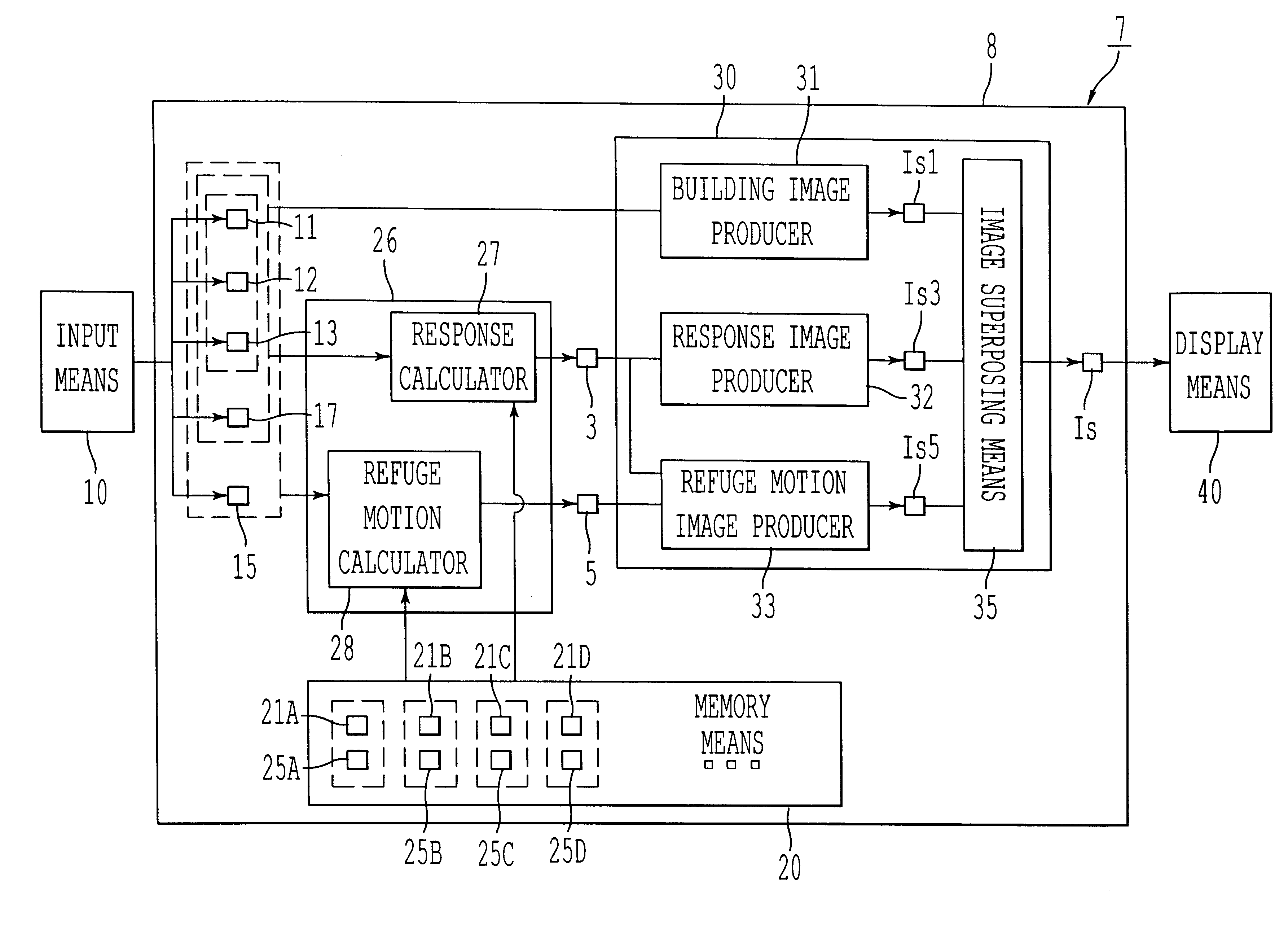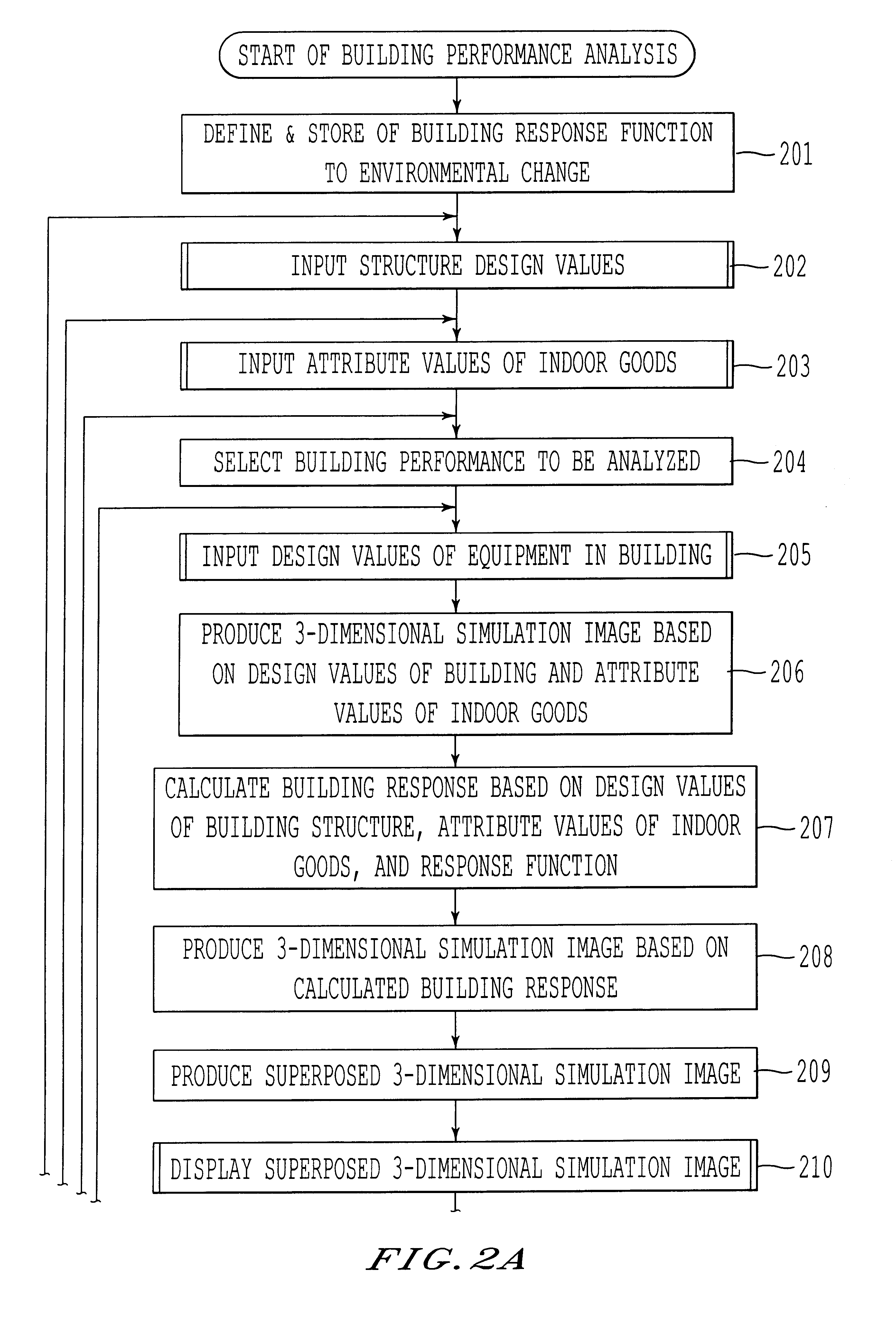Method and apparatus for analyzing building performance
a technology for building performance and performance analysis, applied in the direction of instruments, nuclear elements, analogue processes for specific applications, etc., can solve the problems of difficult to evaluate the level of fire safety of residence and residence performance, and achieve the effect of facilitating visual analysis
- Summary
- Abstract
- Description
- Claims
- Application Information
AI Technical Summary
Benefits of technology
Problems solved by technology
Method used
Image
Examples
embodiments
In the foregoing, the method for analyzing the response of building to an environmental change depending upon structure, equipment and indoor goods has been described. With a building of proper structure and equipment, however, certain performance such as safety of resident life may vary depending on other factors. For instance, a building, which is safe for a couple in the age group of thirties without any physical handicap, may not be safe for a family that include a baby who can not escape by oneself and / or an old person who needs physical aid. Therefore, to ensure fire safety covering safety of residents, it has been recognized that a building should designed while considering factors intrinsic to human being.
FIG. 3 is an exemplary flowchart of a method of the invention enabling analysis of refuge motion of persons in response to an environmental change. Referring to FIG. 3, to analyze refuge motion of persons, at first, a building response function 21A for giving a response 3 o...
PUM
 Login to View More
Login to View More Abstract
Description
Claims
Application Information
 Login to View More
Login to View More - R&D
- Intellectual Property
- Life Sciences
- Materials
- Tech Scout
- Unparalleled Data Quality
- Higher Quality Content
- 60% Fewer Hallucinations
Browse by: Latest US Patents, China's latest patents, Technical Efficacy Thesaurus, Application Domain, Technology Topic, Popular Technical Reports.
© 2025 PatSnap. All rights reserved.Legal|Privacy policy|Modern Slavery Act Transparency Statement|Sitemap|About US| Contact US: help@patsnap.com



